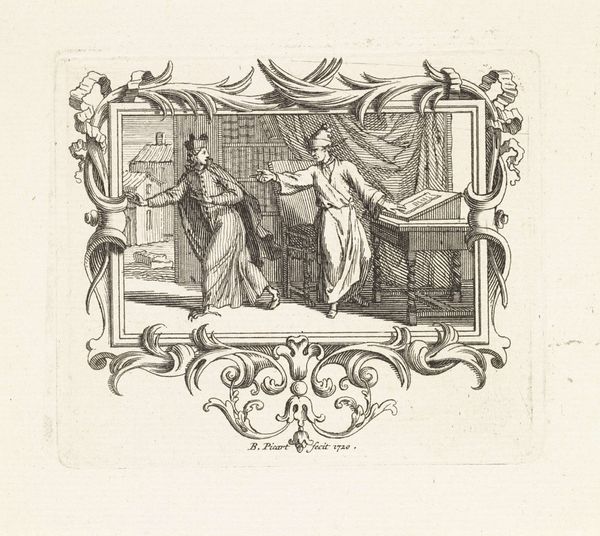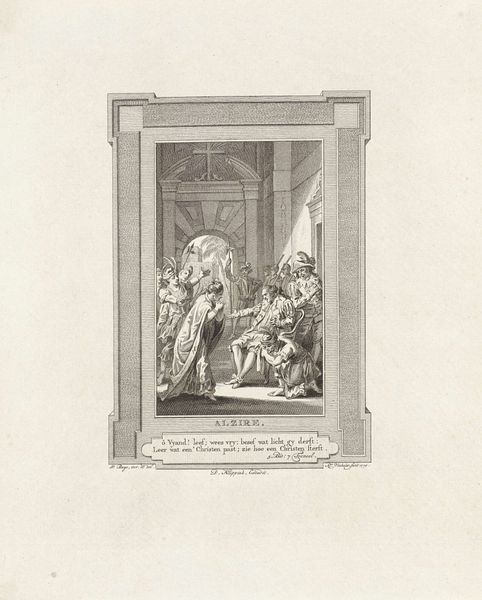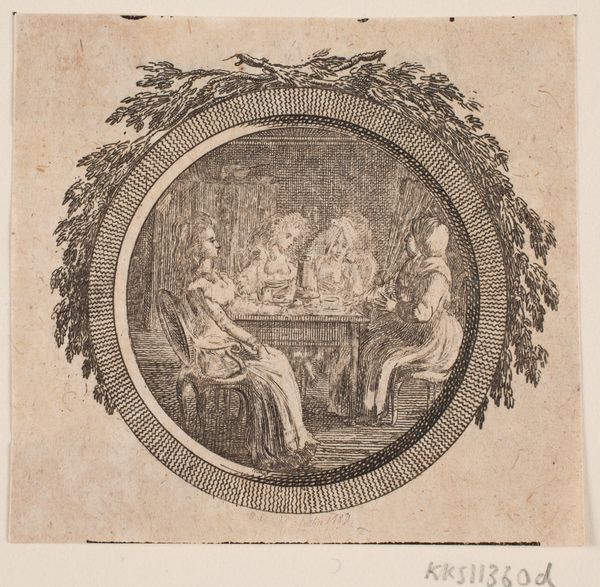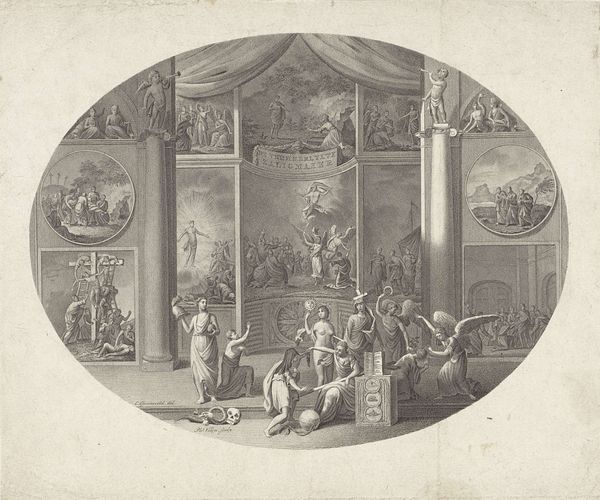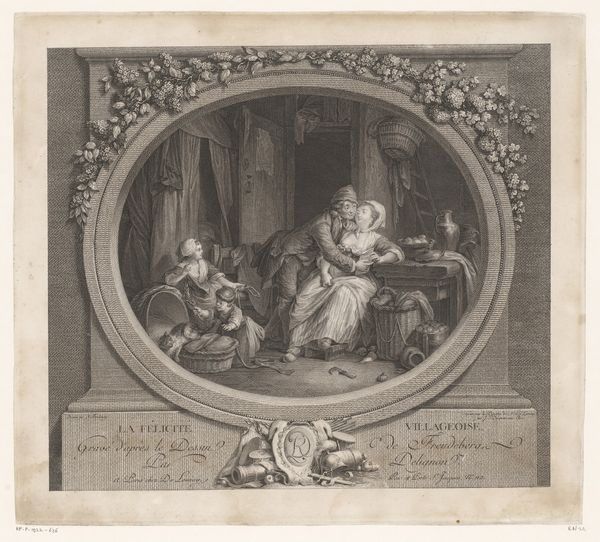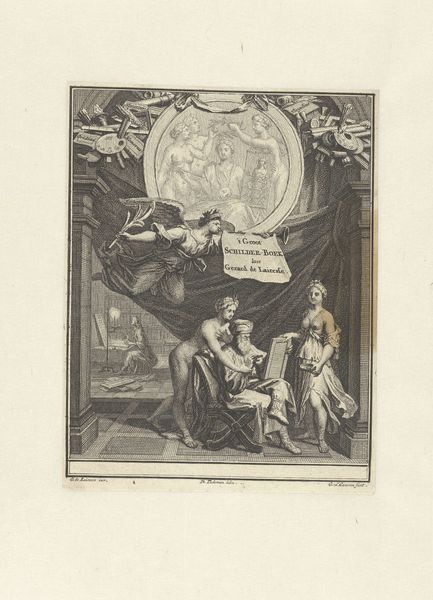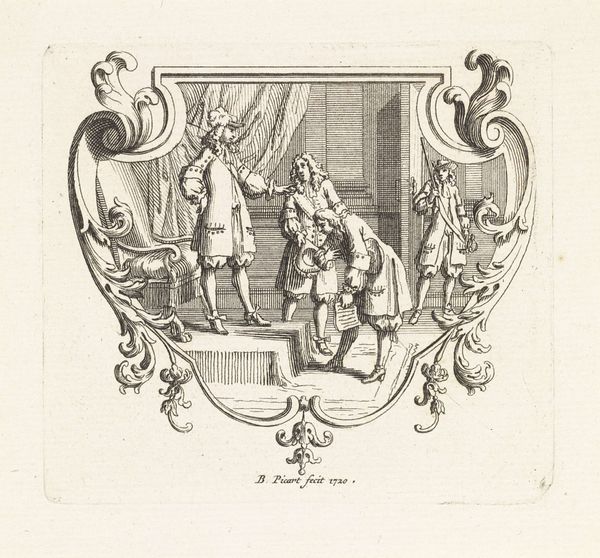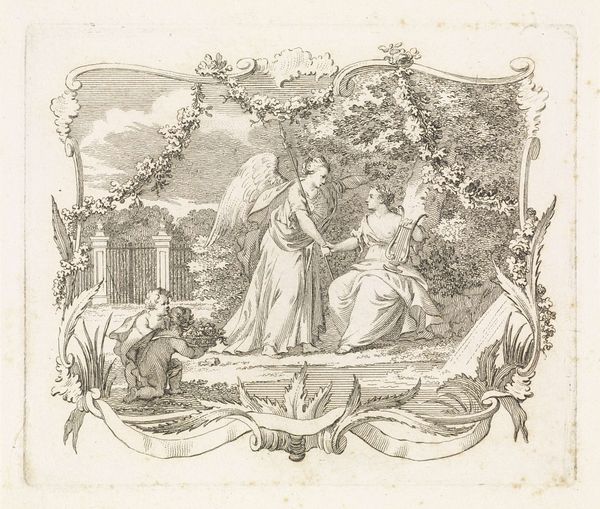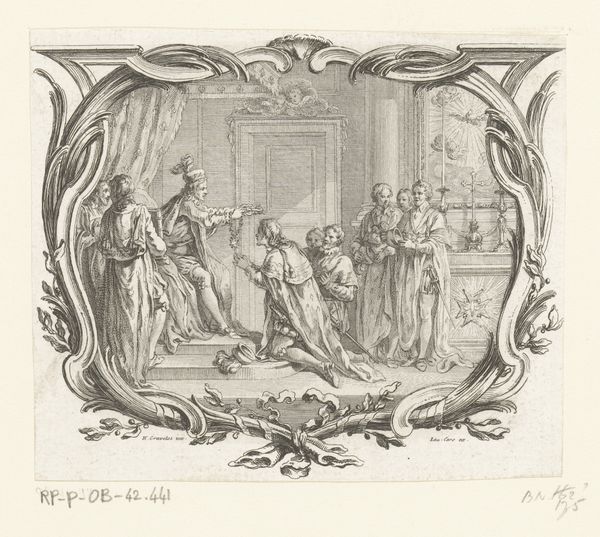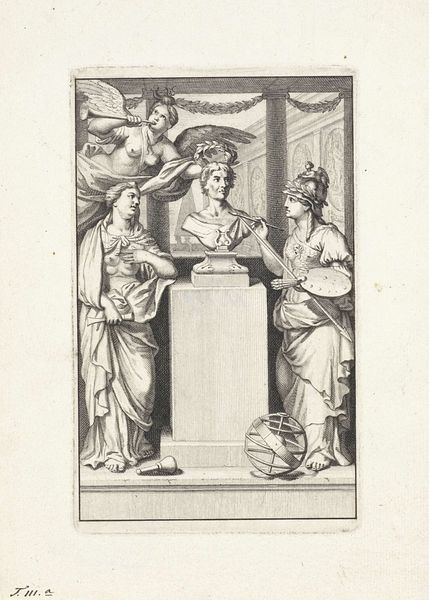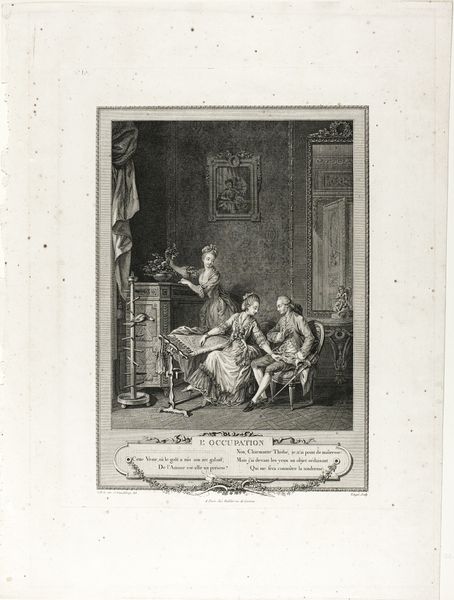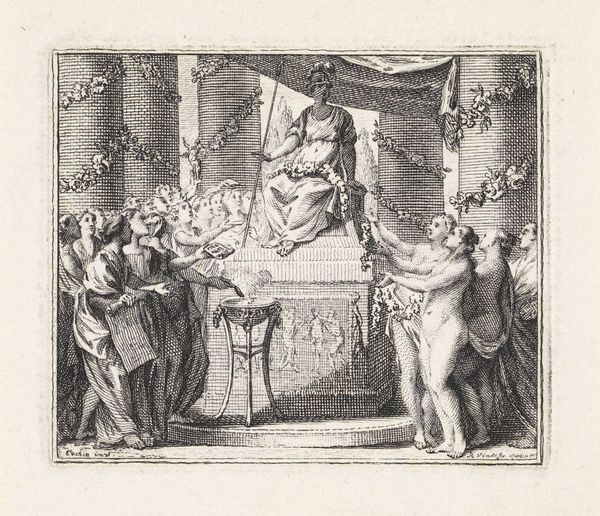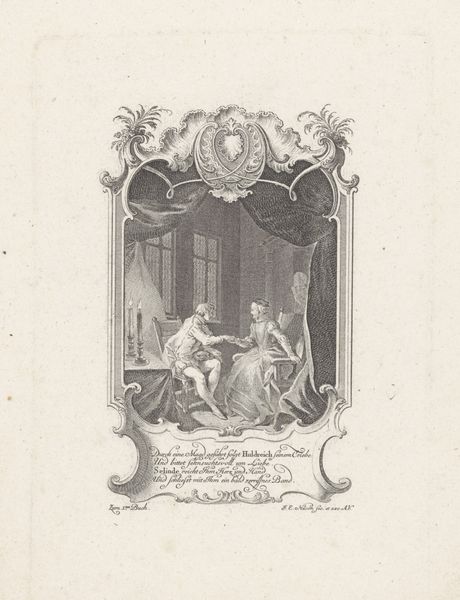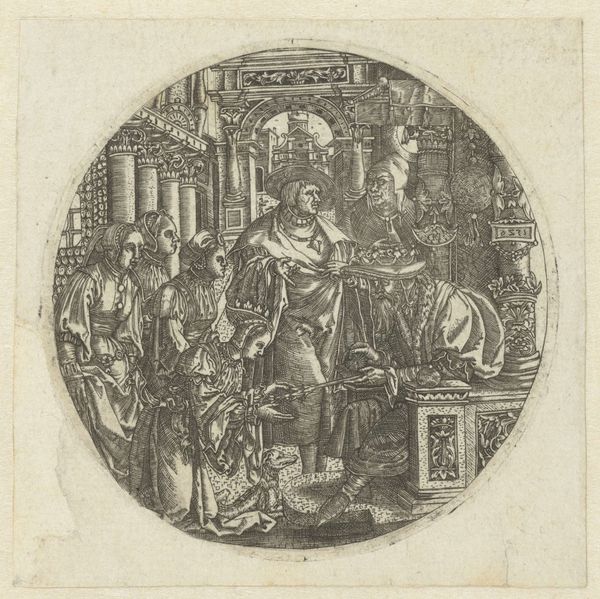
Wapenschild van Scheveningen geflankeerd door Waakzaamheid en Minerva 1704 - 1733
0:00
0:00
jacobusschijnvoet
Rijksmuseum
print, engraving
#
allegory
#
baroque
# print
#
old engraving style
#
classical-realism
#
figuration
#
history-painting
#
engraving
Dimensions: height 67 mm, width 87 mm
Copyright: Rijks Museum: Open Domain
Jacobus Schijnvoet created this print of the Scheveningen coat of arms sometime in the first half of the 18th century using etching. The print allegorically represents the town's identity through its coat of arms, flanked by the figures of Waakzaamheid, or Vigilance, and Minerva, the Roman goddess of wisdom and strategic warfare. Made in the Dutch Republic, this print reflects the cultural values of the time, in which civic identity was expressed through heraldry and classical symbolism. The presence of Minerva is particularly significant, referencing not only the Dutch Republic's military strength but also its intellectual and cultural achievements. Prints like these served a public role by visually reinforcing a community's identity and its aspirations. Understanding this print requires us to look into the history of Scheveningen, the role of heraldry in Dutch society, and the function of classical imagery in constructing civic pride. These sorts of prints were important to shaping and reflecting the character of the communities they served.
Comments
No comments
Be the first to comment and join the conversation on the ultimate creative platform.
